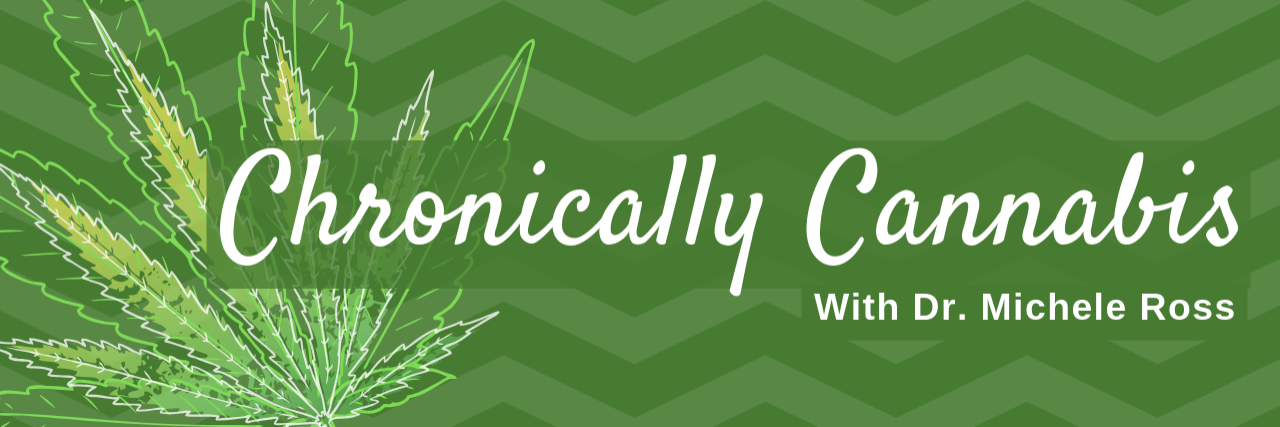Chronically Cannabis With Dr. Michele Ross: What Types of Products Are Best for Pain?
In Chronically Cannabis, Dr. Michele Ross, a neuroscientist and cannabis expert, answers the Mighty community’s questions about treating chronic pain with cannabis.
Editor's Note
Cannabis can be consumed in many forms, including lotion, oil, edibles, or via smoking or vaping. In this column, Dr. Ross reveals which products she recommends most for people with chronic pain.
Please see a doctor before starting or stopping a medication.
The Mighty Community asked: “What cannabis products provide the most pain relief?”
It is really all personal, but I think for chronic pain, especially for people new to cannabis, the gateway into it is using lotions. That’s because CBD and THC really aren’t absorbed into the bloodstream when you’re using a lotion.
Have questions about medical cannabis? Join Cannabis Corner and connect with other medical cannabis users and share your experience.
For people who are worried about drug tests at work, there’s really no THC that’s going to show up. I think a lotion you could put on your calves, hands and feet is so amazing for pain. People don’t even realize what it’s like to have a fully relaxed back, neck and muscles. Most of us are so tense. That tension and pain continually cause more pain, an endless cycle of pain. For a lot of people, those lotions start providing that relief. You notice when you use those topical creams that you need less pain management, so I think it’s great to have that external pain management.
For every patient, taking cannabis oil drops every day plus using lotion is probably the best way to manage your pain.
This is a taboo thing, but I know the chronic pain community is a little more open than others — most medication comes in suppository form. I am actually a big fan of THC suppositories. Personally, I can’t handle a lot of THC and I’m a scientist so I can’t be high at work. But I need that pain relief and there’s no way I could get pain relief from CBD-only products. So I use THC suppositories. You can use them vaginally or rectally, and what happens is they don’t go into your bloodstream. They provide local pain relief, whether it’s pelvic pain for endometriosis, back pain, sciatic pain — it provides the cannabinoids right there. They’ll relive pain and inflammation, but they don’t get you high. You’ll have a warming sensation. It’s almost like a warming lube in that area, but you’re not high. I’d much rather have that feeling, that glowing goddess feeling, than sharp stabbing pain, back pain, pelvic pain and all that.
I want to stress that if someone is working through what works for them and they’re still not finding that “thing,” please explore. You might find that thing that works for you would never have thought. I would never have thought I’d try the weed tampon and then was like, “Oh my God, this is a game changer.”
Glossary of Terms
Cannabis: Also known as marijuana, weed and pot, cannabis is a plant that can be eaten, brewed, smoked and vaporized. Its oils can also be extracted and consumed, or incorporated into topical creams. Cannabis is consumed for its psychoactive and pain-relieving properties. It is currently a Schedule 1 drug in the United States and is illegal at the federal level, but is legal for recreational and/or medical use in 33 states.
THC: Abbreviation for tetrahydrocannbinol, one of the compounds, or “cannabinoids,” found in cannabis. It is responsible for the plant’s psychoactive effects, since it binds to cannabinoid receptors in the brain responsible for pleasure and pain.
CBD: Abbreviation for cannabidioil, another cannabinoid found in cannabis. CBD is non-psychoactive and, unlike THC which binds to cannabinoid receptors, stimulates the body’s own endocannabinoid system. This can lead to physical benefits like reducing pain and lowering inflammation.
Endocannabinoids: Neurotransmitters produced by the body that bind to cannabinoid receptors. Endocannabinoids help control functions like pain and inflammation and maintaining homeostasis in the body.
Strain: A variation of cannabis that has been bred to enhance certain characteristics and compounds.
Terpenes: Aromatic oils secreted by the cannabis plant, which give its particular strain unique flavors and scents. Over 100 types have been identified. Terpenes also interact with other cannabis compounds to produce various physical and psychoactive effects.
Indica: A type of cannabis plant characterized by short stature and broad leaves, which grows better in a colder climate. Previously believed to offer relaxing and pain relieving-benefits, it’s now understood to offer similar benefits as other cannabis varieties.
Sativa: A type of cannabis plant characterized by its tall height, narrow leaves, which grows better in warmer climates. Previously believed to offer invigorating, energetic benefits, it’s now understood to offer similar benefits as other cannabis varieties.

